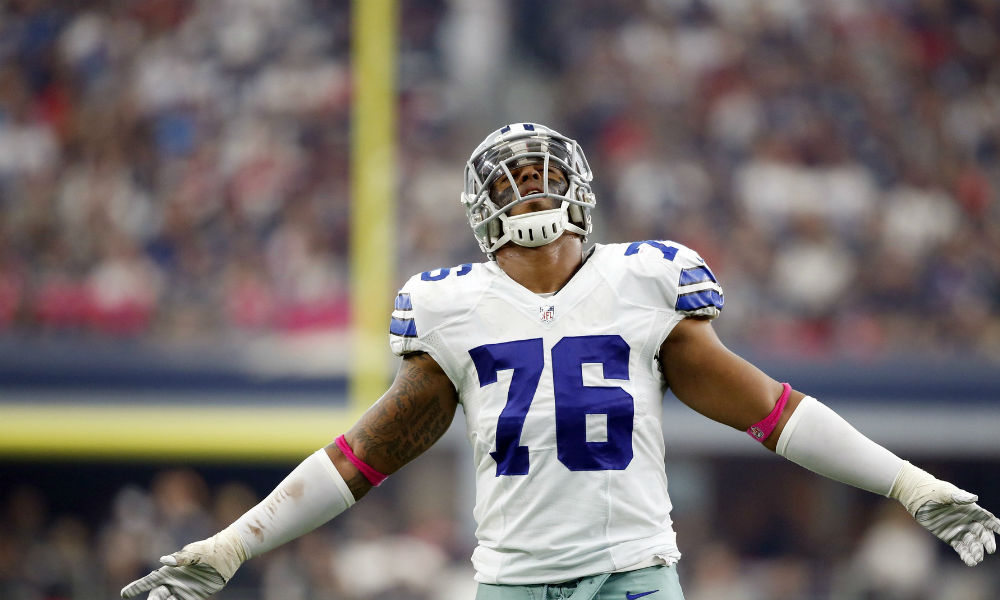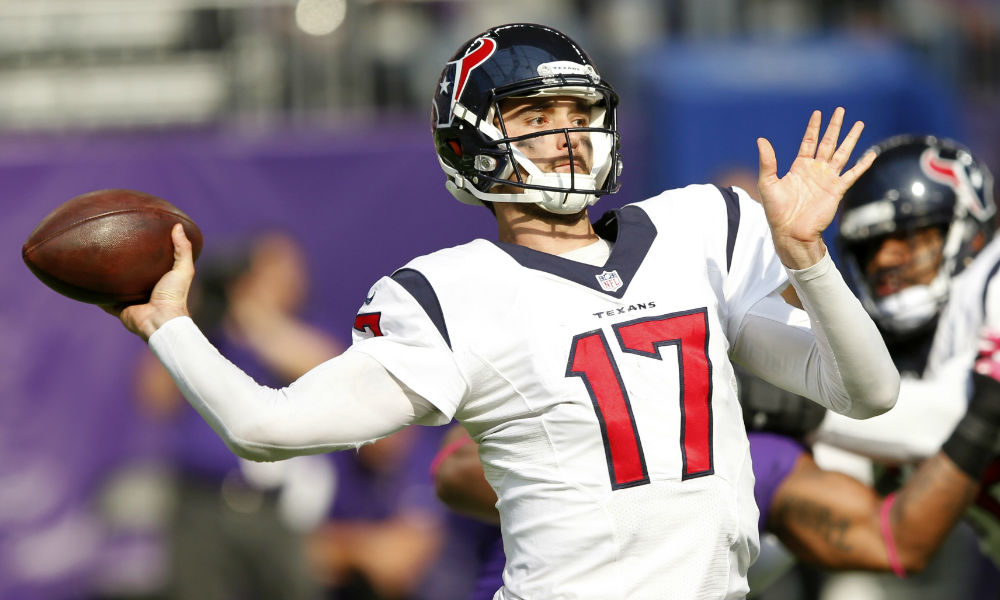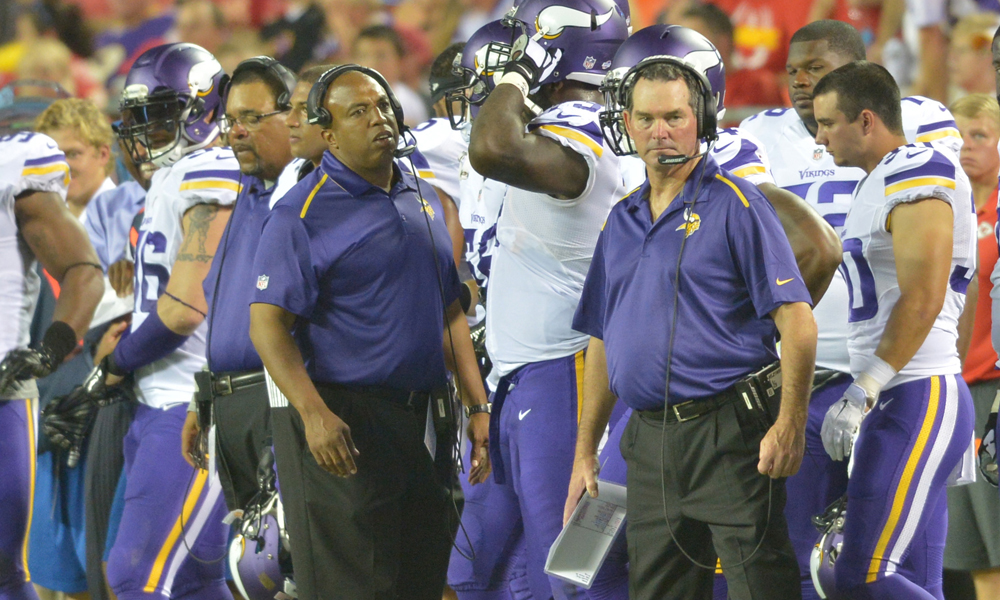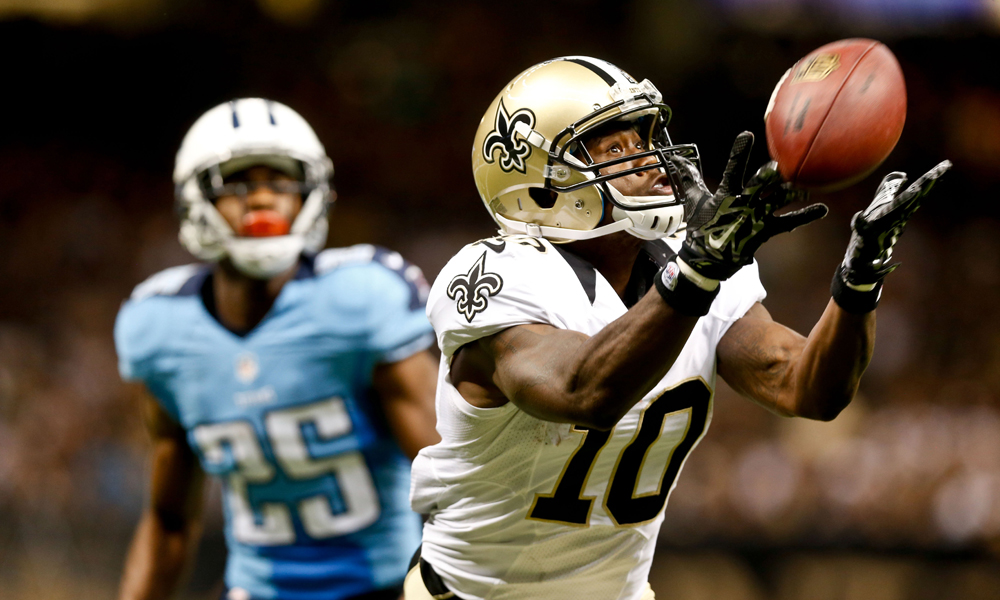News
Real-time 40s a Combine first
INDIANAPOLIS — In a long-overdue change that could end years of conflict and confusion at the annual scouting combine, NFL Network — and affiliated league media — plans to display real-time clockings of the celebrated 40-yard dashes during live telecasts of workouts starting Friday.
Although NFL Media’s extensive press release on this year’s dynamic coverage failed to note it, The Sports Xchange learned that Zybek Sports synchronized its technology with NFL Network, which, in a first, will be able to show 40-yard results in real time.
“We’re going to show the clock on the screen,” NFL Media’s Alex Riethmiller confirmed to The Sports Xchange in a phone call.
This seemingly simple action could bring an end to decades of secrecy and years of confusion surrounding the combine’s 40-yard dashes, by far the most popular event despite disputes over its relevance in gauging a player’s football ability. But’s that’s another issue for another time.
However, the NFL combine’s long-overdue decision to share 40 times so openly will not eliminate controversy.
The decision to reveal results recorded by only one of the three timing methods will complicate, if not sever, the connection for historical comparisons to the 40 times of iconic stars of the past, such as Auburn multi-sport star Bo Jackson, who was timed in 4.12 seconds in 1986 by a hand-held stopwatch. The best time announced at a combine this century, however, was by running back Chris Johnson of East Carolina in 2008, when he clocked a 4.24 by hand-held and electronic methods — more on that later.
As fans and participants rev up for this year’s runs at the combine, nobody is expected to beat either of those times, but the best candidates to get closest are:
–Wide receiver Phillip Dorsett of Miami, who has a verified 4.37 and an unverified 4.29.
–Wide receiver Sammie Coates of Auburn is expected to be in the low 4.3s.
–Wide receiver Devin Smith, Ohio State, has extensive training in track, and should be a workout warrior with one of the best 40 times based on his 28.2 yards per catch average as a senior.
So why are there comparisons to Johnson and not Jackson at 4.12?
There’s the rub.
Until 1990, 40-yard dash times for NFL prospects were measured by starting and stopping a stopwatch by hand, which is called hand-held timing (HH). It is not the most accurate method, but remains a source of fabled sprints — such as Jackson’s — and the one still used most often in high school and college timings.
Not coincidently, it almost always yields the fastest times.
In the 1990s, a system was added that started the time by hand and stopped it when the runner crossed a beam at the finish. That is referred to as electronic timing (ET), despite the fact it is actually only half electronic and half human intervention. For the last five combines, results were also created by fully-automated timing (FAT), with the clock starting electronically when a runner lifts his hand and ends when he crosses the beam.
The time NFL Network will show live on their broadcast is the hybrid, electronic time that is slower than the hand-held, but faster than the fully-automated method. To be clear, the National Invitational Combine (NIC) group that runs the event records times via all three methods — hand held, electronic and, for the past five years, fully automated.
For decades, combine officials did not reveal times directly to the media. But 11 years ago, NFL media, including NFL Network and NFL.com, began covering the event and needed to announce something to the audience immediately after a run. Until this year, that time was recorded by Charley Casserly, a former general manager with Washington and Houston, who did his best from a seat in the stands.
Despite calling that early clocking unofficial, it still caused a stir if the time was close to or bettered a record, and that stir was turbocharged by the advent of social media. Invariably, another time handed down from combine officials up to an hour later was much slower.
This year’s real-time broadcast not only should minimize confusion, but also probably shows a shift in power from those who run the combine to the money-making power of NFL Media on television, online and through a new app.
“NFL network is in charge of that, you will have to call them,” was the response to a phone call asking NIC officials to verify that the 40 times would be televised real time.
Riethmiller, who works for NFL Media in Los Angeles, confirmed that they “didn’t want to have Charley Casserly trying to give times from a seat in the stadium; we needed something that worked better.”
So Michael Weinstein, founder of Colorado-based Zybek Sports, which has provided state-of-the-art timing equipment for several years, worked with NFL Network to synchronize times for real-time broadcasting.
“The plan is to display the 40 hand start and laser finish times real-time on the TV through the NFL media,” Weinstein told The Sports Xchange. “We have it programmed and tested and everything works. On the TV, you will see the running clock, the 10-yard split and the 40-yard time.
“We are coordinating directly with the NFL media. Although these will still be called the unofficial times until they are official, I doubt there will be any changes.”
Riethmiller explained that, despite being able to televise the clocking in real time, there may be a delay before declaring it official. Weinstein said a review of last year’s data shows that the screen output was exactly the same every time compared to what was announced as official.
OK, now let’s go back to comparing various 40-yard times over years and decades.
Based on empirical data from thousands of 40-yard dashes compiled by Zybek Sports, the hand-held times are invariably fastest, with the electronic hybrid (ET) adding an average of .175 seconds and the fully automated (FAT) adding .24 seconds.
But never underestimate the impact of human intervention. As it turns out, Johnson’s best time in 2008 of 4.24 seconds was the same via hand held and electronic. Make what you want of that, but it was a statistical and historic anomaly.
Speaking of history, the challenge now for interested runners and fans is whether to put Jackson’s time in perspective with those after 1990, or vice versa?
Weinstein notes that football fans are sensitive to the slightest differences in times for the 40-yard dash that is not only popular, but extremely important at all levels. His goal to create a standardized timing method that is used to equalize 40-yard results from high school through the pros in all sports.
After an extensive analysis of 40-yard times, Weinstein quantified their impact.
“There are 6.9 million High School athletes in the United States that are competing for 450,000 College positions,” Weinstein wrote in the conclusion to his study. “Presenting accurate and consistent data from standardized combine testing is increasingly important as the number of competitors continues to grow and as modern training methods are expanding the bounds of athletic potential.
“The error from hand timing results in a minimum of 0.1 to 0.25-second difference from electronic timing should be considered if hand timing is being used for ranking athletes. Finally, accurate and repeatable testing data provides a training metric that can be used for improving the combine scores. Minor improvements in an athlete’s score can make a big difference in their future.”
So, as the NFL combine enters a new age of transparency, here is a look at the best 40-yard times this century. There are two lists, one sorted by the best electronic (ET) time and another by the best hand-held times.
While Johnson is No. 1 on the list of best electronic times (ET), it is interesting to note differences in the list of hand-held times, especially that four players were clocked faster than Johnson’s 4.24, including a 4.16 by Kent State wide receiver Dri Archer last year, although his ET was a full tenth of a second slower, good for second place at 4.26.
Top Testing Scores from 2000-2014 NFL Combines
—————————————————————-
Fastest 40-yard hand/electric times (Started by hand, stopped by beam)
Time starts on player’s first movement
ET Time,(HH time) Player, Position, College, Year, * – Underclassman
4.24 – (4.24) Chris Johnson, (RB), East Carolina – 2008
4.26 – (4.16) Dri Archer, (WR), Kent State – 2014
4.27 – (4.21) Marquise Goodwin, (WR), Texas – 2013
4.28 – (4.22) Jacoby Ford, (WR), Clemson – 2010
4.28 – (4.25) Demarcus Van Dyke, (CB), Miami – 2011
4.30 – (4.25) *Darrius Heyward-Bey, (WR), Maryland – 2009
4.32 – (4.26) Jerome Mathis, (WR), Hampton – 2005
4.33 – (4.29) *Fabian Washington, (CB), Nebraska – 2005
4.33 – (4.28) Mike Wallace, (WR), Mississippi – 2009
4.33 – (4.29) Dominique Rodgers-Cromartie, (CB), Tennessee State – 2008
4.33 – (4.29) *Josh Robinson, (CB), Central Florida – 2012
4.34 – (4.21) Trindon Holliday, (WR), LSU – 2010
4.34 – (4.28) Ryan Swope, (WR), Texas A&M – 2013
4.34 – (4.28) Tavon Austin, (WR), West Virginia – 2013
4.34 – (4.28) Onterio McCalebb, (RB), Auburn – 2013
4.34 – (4.29) Johnny Knox, (WR), Abilene Christian – 2009
4.34 – (4.30) Darrent Williams, (CB), Oklahoma State – 2005
4.34 – (4.31) *Patrick Peterson, (CB), LSU – 2011
4.35 – (4.30) Yamon Figurs, (WR), Kansas State – 2007
4.36 – (4.28) *Stephen Hill, (WR), Georgia Tech – 2012
4.37 – (4.27) C.J. Spiller, (RB), Clemson – 2010
4.37 – (4.31) Justin Gilbert, (CB), Oklahoma State – 2014
4.39 – (4.27) Stanford Routt, (CB), Houston – 2005
4.40 – (4.30) Mike Thomas, (WR), Arizona – 2009
4.43 – (4.31) Taylor Mays, (FS), Southern Cal – 2010
Fastest 40-yard hand-held times (Started, stopped by hand)
Time starts on player’s first movement
HH Time,(ET time) Player, Position, College, Year, * – Underclassman
4.16 – (4.26) Dri Archer, (WR), Kent State – 2014
4.21 – (4.27) Marquise Goodwin, (WR), Texas – 2013
4.21 – (4.34) Trindon Holliday, (WR), LSU – 2010
4.22 – (4.28) Jacoby Ford, (WR), Clemson – 2010
4.24 – (4.24) Chris Johnson, (RB), East Carolina – 2008
4.25 – (4.28) Demarcus Van Dyke, (CB), Miami – 2011
4.25 – (4.30) *Darrius Heyward-Bey, (WR), Maryland – 2009
4.26 – (4.32) Jerome Mathis, (WR), Hampton – 2005
4.27 – (4.37) C.J. Spiller, (RB), Clemson – 2010
4.27 – (4.39) Stanford Routt, (CB), Houston – 2005
4.28 – (4.33) Mike Wallace, (WR), Mississippi – 2009
4.28 – (4.34) Ryan Swope, (WR), Texas A&M – 2013
4.28 – (4.34) Tavon Austin, (WR), West Virginia – 2013
4.28 – (4.34) Onterio McCalebb, (RB), Auburn – 2013
4.28 – (4.36) *Stephen Hill, (WR), Georgia Tech – 2012
4.29 – (4.33) *Fabian Washington, (CB), Nebraska – 2005
4.29 – (4.33) Dominique Rodgers-Cromartie, (CB), Tennessee State – 2008
4.29 – (4.33) *Josh Robinson, (CB), Central Florida – 2012
4.29 – (4.34) Johnny Knox, (WR), Abilene Christian – 2009
4.30 – (4.34) Darrent Williams, (CB), Oklahoma State – 2005
4.30 – (4.35) Yamon Figurs, (WR), Kansas State – 2007
4.30 – (4.40) Mike Thomas, (WR), Arizona – 2009
4.31 – (4.34) *Patrick Peterson, (CB), LSU – 2011
4.31 – (4.37) Justin Gilbert, (CB), Oklahoma State – 2014
4.31 – (4.43) Taylor Mays, (FS), Southern Cal – 2010
–Frank Cooney, founder and publisher of The Sports Xchange and NFLDraftScout.com, has covered the NFL and the draft since the 1960s and is a selector for the Pro Football Hall of Fame.
News
Buccaneers admit mistake, boot Aguayo
Source: Mike Florio of ProFootballTalk
Powered by WPeMatico
News
Did Bucs put too much pressure on Aguayo?
Source: Mike Florio of ProFootballTalk
Powered by WPeMatico
News
Broncos holding their breath on Derek Wolfe
Source: Mike Florio of ProFootballTalk
Powered by WPeMatico





